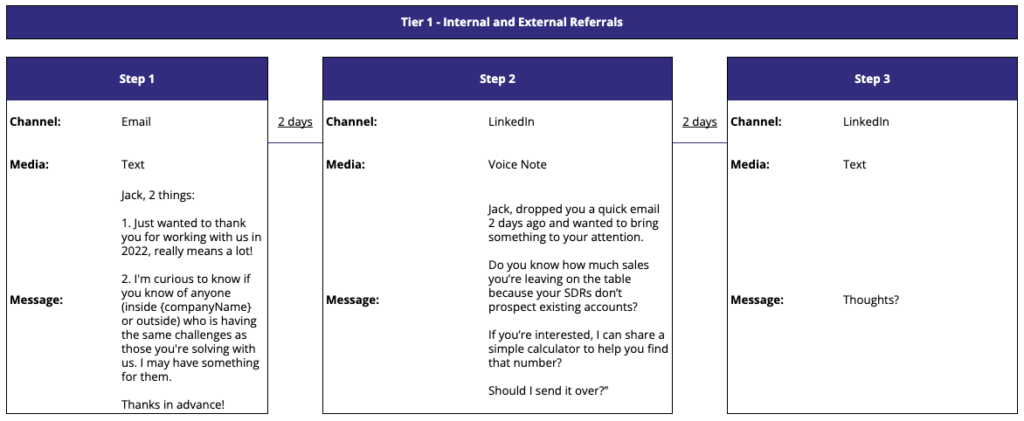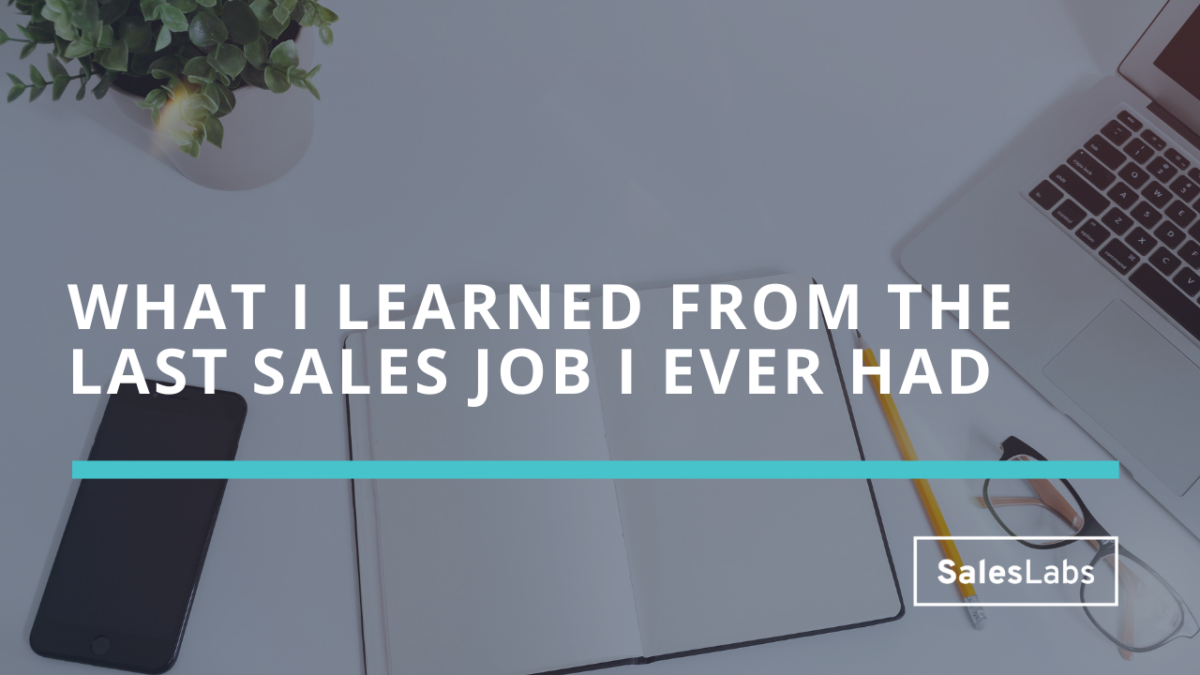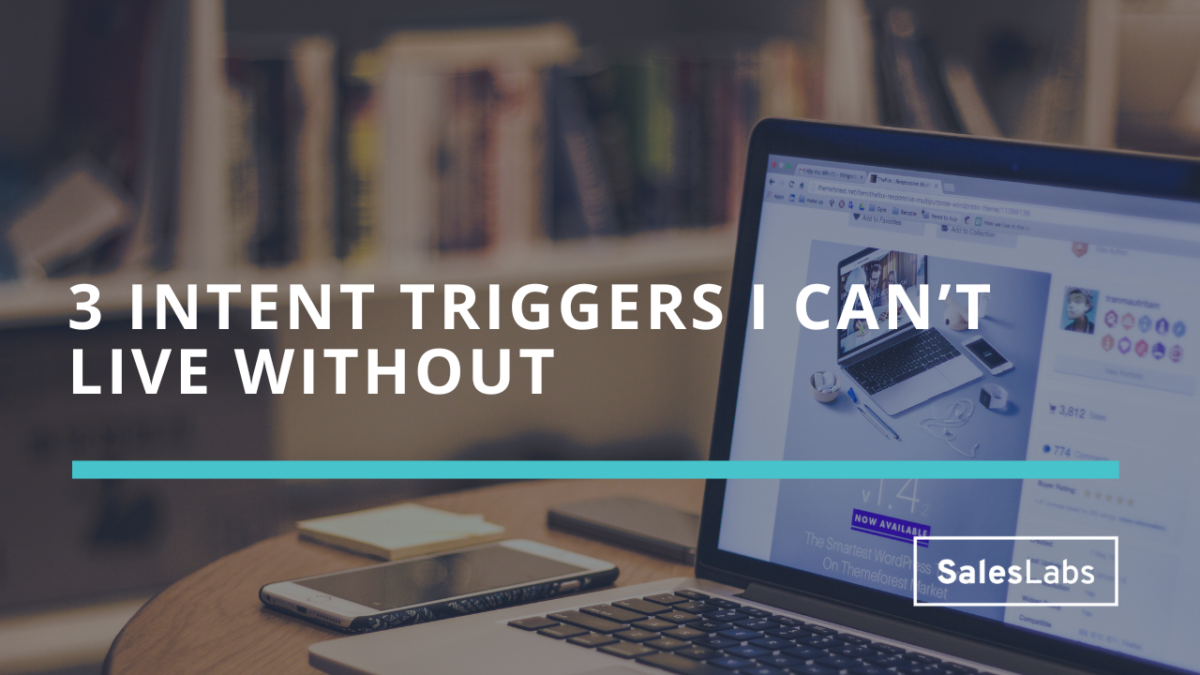A simple prospecting shift to book more meetings
In today’s newsletter, I will walk you through an important mindset shift for salespeople:
Moving from booking meetings with total strangers only (net new logos), to booking meetings with people you already know.
This shift will drastically improve your prospecting results, as you’ll start a lot more conversations, and book more meetings as a result.
It’s important because it will change your focus from something that requires advanced prospecting skills – convincing a total stranger to meet with you, to something you naturally do every day – starting conversations.
Let’s dive in:
The biggest mistake
Most salespeople who are prospecting have one goal: turning strangers into customers. This approach is understandable, because that’s what they are measured on.
However, when you are focusing on booking meetings with total strangers only, you make your job a lot harder than it has to be. Without reaching out to people they already know (active customers, previous customers, partners, and so on), salespeople end up having less conversations, and losing motivation.
Before you know it, you’re sending hundreds of emails each week, without getting any reply, and you start worrying about reaching your targets. You change your messaging too often, and your inner voice starts doubting your capacity to book a meeting.
A better approach: focus on people you know
Here’s how I recommend building pipeline with people you already know:
- Create prospect tiers: What type of people can you reach out to? Existing customers, past customers, lost opportunities, partners, etc. ?
- Get accurate data: Is the contact info still relevant? What kind of trigger can you use?
- Build a sequence skeleton for each tier: What concrete steps will you follow to get them to answer?
- Write your messages: What are you going to write in your touchpoints?
- Set time blocks and execute: How can you protect your time to get in touch with these people on a daily basis?
Example: Booking meetings with past customers
For example, let’s say you have a good amount of past customers, but no active engagement with them.
Start by following the 5 steps from above:
Create prospect tiers: From all these past customers, you may have some who churned, some who worked with you for a few months, or standalone projects. List every prospect type and assign them to a different tier.
Get accurate data: Now that you have your list, you need to make sure your information is up-to-date. Is their email or phone number still accurate (check Kaspr if you need good quality data)? Did they change jobs? Did they get promoted? Find all the information you can to make your outreach message relevant.
Build a sequence skeleton for each tier: With people you already know, your chances of getting replies are way higher than with total strangers. But you can’t expect everyone to immediately reply and jump on a meeting with you. Using 3 touchpoints over email and LinkedIn is preferable because it helps you preserve your relationship, without being too pushy.
Here’s a sequence structure you can use:

Write your messages: You have your sequence skeleton, now you need to write something relevant to get your prospects interested (check these additional templates). Remember, your messages should have the following elements:
- be short (under 125 words)
- give a valid reason for reaching out
- tease curiosity
You can use the 3 following frameworks to do so:
First message:
- Trigger: A mention of your relationship
- Reason: The reason why you’re contacting them
- Teaser: A short sentence to tease the curiosity of your prospect
Second message:
- Trigger: A mention of your previous message
- Question: A question related to a problem they had
- Teaser: An intriguing piece of information
- CTA: A simple ask
Third message:
Bump: A one or two words question
Here is an example:

Set time blocks and execute: You may be tempted to launch your sequence and contact as many prospects as possible, but it’s not the best idea. If you reach out to too many prospects at once, you’ll quickly lose motivation. You will end up with too many follow-ups at once, which will most likely discourage you.
Instead, create daily time blocks to protect your time, and add a set number of prospects to your sequence every day. I personally contact 2 expansion prospects per day, as part of my 5 daily new prospects to contact. This creates a steady input of prospects, which turns into a predictable output (replies and meetings).
Tying it back to you
If your job involves booking meetings with prospects (it should be if you’re in sales), start by creating tiers of people you already know, and get accurate data about them.
Once you’ve done that, build a sequence skeleton, write your messages, and include these prospects in your daily prospecting routine.
This approach will help you start many more conversations, and help you land more meetings, without having to focus on total strangers only.
And if you want a step-by-step guide on doing this, and much more, then go check my flagship course, The Prospecting Engine.
Hope to see you in there.
Cheers,
Thibaut
P.S. When you’re ready, here are 3 ways I can help you:
→ Enroll in The Prospecting Engine
→ Need to train your team or invite me as a speaker? Book a call here
Subscribe to the Newsletter
Get my free, 4 min weekly newsletter. Used by 5.400+ salespeople to book more meetings and work when, where, and how they want.
Subscribe to the Newsletter
Get my free, 4 min weekly newsletter. Used by 5.400+ salespeople to book more meetings and work when, where, and how they want.




